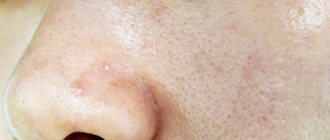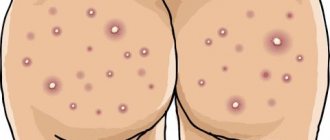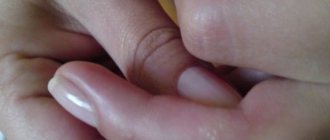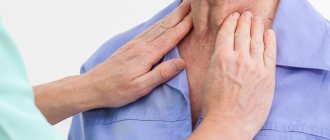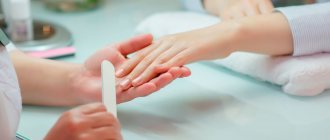- Bloody pimple on the skin of the face and body: causes
- Other causes of bloody pimples
- Home Remedies to Treat Blood Pimples
- How to get rid of a bloody pimple on the face or back
A blood-filled pimple is usually caused by trauma to the skin, such as squeezing or pinching the pimple. Certain injuries, according to Lymphedema People, rupture the underlying blood vessels, causing the pimple to drain into blood and lymph fluid. Blood-filled pimples should never be squeezed or popped and should be treated naturally. Opening A pimple before it heals can spread bacteria to other areas of the skin, which can cause an infection.
Description
The following types of acne can form on human skin:
- Comedones. Most often they look like small black dots on the skin. However, there are also white comedones, which look like small bumps. Such formations are absolutely painless. When pressed, a yellowish “rod” emerges from them, consisting of subcutaneous fat.
- Blackheads (acne). These are inflamed bumps on the skin filled with pus. As acne matures, a white head appears on its surface. Often comedones turn into acne. This usually occurs when an infection enters the wound during squeezing.
- Deep subcutaneous acne. They are difficult to detect on the skin. These formations are located in the deep layers of the epidermis. Subcutaneous pimples often develop into boils - large, painful ulcers.
A blood pimple is one of the types of acne. Such formations on the skin have the following features:
- Blackheads can be bright red or purple in color. Less common are bluish and black pimples.
- It seems to a person that the bump on the skin is filled with blood. Actually this is not true. Blood pimples are composed of pus, just like regular acne. The bright red color is given to them by dilated blood vessels in the inflamed area.
- When you press on the pimple, blood oozes out. This occurs due to damage to blood vessels. Under no circumstances should you try to squeeze out this type of acne. This can lead to prolonged bleeding and infection of the wound.
Causes of acne bleeding
- Mechanical influences, i.e. squeezing, rubbing, picking, peeling off crusts. All these actions injure the skin and capillaries close to it.
- Chemical procedures. This includes applying masks, performing peelings, and exfoliating procedures. Such activities remove some of the epidermal cells, irritating the inflamed areas with acne. Upon completion, bleeding pimples can be found in some places.
- Secondary infection of acne, i.e. the addition of new bacteria or fungi. Their contamination of the problem area leads to suppuration of acne and the appearance of hemorrhagic exudate in the subcutaneous space, which accumulates and can spontaneously come out.
- Blood diseases, immunodeficiencies, metabolic disorders. All these pathologies can weaken the body so much that banal acne begins to progress and is complicated by various infectious or skin diseases.
Localization
Bloody pimples form most often on the face. However, this is far from the only place where they are localized. Such rashes may appear on the following areas of the body:
- back;
- hips;
- buttocks;
- pubic area;
- breasts
Red blackheads can form on the lips. They also occur on mucous membranes. Bloody pimples in the mouth are a common occurrence. Most often, the rashes are multiple in nature and appear simultaneously in the mouth and on the cheek. Bloody acne can also appear on the tongue; it is popularly called “tipun”.
Bloody pimple on the skin of the face and body: causes
Low platelet
Platelets are essential components in your body as they stimulate blood clotting to stop excessive bleeding whenever you get injured. So if you have a low platelet count, blood will likely leak into your mucous membranes even if you get injured. minor injury This excess blood underneath your mucous membranes can show up on the skin of your face or body as a blood pimple.
The areas that are usually affected by blisters due to platelet deficiency lie deep in the channels of the skin. Usually, blood blisters formed due to inadequate platelets are painless and hence can be painful when touched.
Stomatitis
Canker sores are a special form of ulcer They usually appear as large sores The pain can be filled with blood, which forms blood blisters Medications: side effects of some medications can lead to the formation of blood blisters Often these prescriptions cause allergies, which manifest as blood blisters forming in the mouth Specific areas The areas that may be affected by medication side effects include the inner lips, inner cheeks, roof of the mouth, gums, and tongue.
Smoking tobacco and drinking alcohol
Excessive use of such bad habits can also increase your chances of developing blood pimples and the severity of the disease.
Allergy
Your body may be allergic to certain substances. Certain foods and drinks can cause allergic reactions and in severe allergic stages, in addition to a rash or itching, you may even experience bloody pimples on your face or body. Allergic reactions may include the spontaneous formation of several blisters of blood because the sudden The appearance of blood blisters is often associated with symptoms of allergic reactions. Some people get blistering blisters after eating certain foods, such as sweets or chocolate, or, more often, from highly spicy foods.
Hormonal changes
Hormonal changes in your body can cause blood blisters to form on your face and other areas of the skin. Typically, hormonal changes lead to hormonal stress and other changes in your body. Your body's response to particularly drastic hormonal changes may result in the formation of bloody pimples. Such cases are common among pregnant women, or women experiencing menopause and menopause.
Poor nutrition
Blood blisters can also be caused by poor diet or a lack of certain vitamins in your body. If you don't have enough vitamins in your diet, you may get blood blisters on unpredictably anywhere on your face or body. Vitamin C and B12 deficiency in particular are common causes of blood blisters in the mouth , especially if they keep coming back. According to the Mayo Clinic, "Vitamin C deficiency can lead to scurvy. Signs and symptoms of this rare disease include bleeding under the skin and around the gums."
Oral herpes
A herpes simplex infection can cause blood blisters to appear on your face, along your lip line. In fact, the formation of blood blisters in your mouth is often seen as a symptom of a herpes simplex infection. Usually, when small or tiny blood blisters form periodically, there is a chance that you have contracted herpes simplex infection.
HIV AIDS
Formation of blood blisters may be a sign of your weak immune system. Of course, one of the main causes of weak immunity is HIV and AIDS. So, the formation of regular and repeated blood pimples in your mouth may indicate that you have contracted HIV/AIDS. However, there are other reasons as well weak immunity, including poor nutrition.
Diabetes
Typically, diabetes can affect many parts of your body. Likewise, there are many signs and symptoms of diabetes, which include the formation of blood pimples in different areas of the face and body.
Celiac Disease
This is a condition that makes your body intolerant to gluten. Gluten is the umbrella name for plant proteins. When you have this condition, your body becomes very sensitive to gluten. If you eat gluten, blood blisters may form as a reaction to it. Often people experience blood pimples on face, as well as in the mouth, especially on the inner cheek or on the upper wall of the mouth after eating. Such people are likely to suffer from celiac disease, which can also cause a sudden blister of blood to appear in the mouth.
Causes
Why do bloody acne form? This is usually a consequence of various pathologies or an unhealthy lifestyle. The following reasons for the appearance of such rashes can be identified:
- disruption of the endocrine glands;
- excessive consumption of fatty foods;
- gastrointestinal pathologies;
- liver diseases;
- frequent stress;
- alcohol abuse and smoking.
To get rid of red blood pimples forever, you need to eliminate the cause of their appearance. Sometimes, to normalize the condition of the skin, it is enough to change your lifestyle: reduce the fat content in your diet, stop drinking alcohol, quit smoking. But in many cases it is necessary to undergo treatment for the underlying disease. After all, such acne may be just one of the manifestations of serious ailments.
Differential diagnosis
Only a doctor can differentiate blood acne from other skin neoplasms. Therefore, if such acne appears, you should consult a dermatologist. Redheads may be similar in appearance to the following formations:
- Patients often mistake hemangioma for bloody acne. In fact, this formation is a benign tumor consisting of blood vessels. It looks like a raised spot of red, burgundy or purple. If damaged, hemangioma can undergo malignant degeneration. Therefore, if you notice a bloody pimple on your skin, you should never touch it or try to squeeze it out.
- A bloody pimple on the lip may resemble a herpetic rash. Often, patients begin to treat the affected area with antiviral ointments. However, herpes and blood acne are treated with completely different methods. A lip fever usually appears as a watery blister. However, if the blood vessels are damaged, the rashes can fill with blood.
- Bloody pimples on the body are very easy to confuse with manifestations of dermatitis. In some forms of this disease, red blisters appear on the skin. Dermatitis is an allergic disease and is accompanied by severe itching. The patient feels a burning and tingling sensation in the affected area. Blood acne usually never itches.
Typically, a dermatologist makes a diagnosis during an examination. Only a specialist can differentiate the different types of bloody formations. To clarify the cause of acne, the patient may be prescribed additional diagnostic procedures: a biochemical blood test, hormonal tests, as well as examinations of the function of the liver and gastrointestinal tract.
What should you do if blood appears from acne?
- Apply a cotton swab soaked in hydrogen peroxide (3%) to the problem area and press it with moderate force. Medicine and light mechanical pressure will help stop the bleeding.
- If there is no medicine at hand, ice is applied to the wound, which is wrapped in clean gauze or cloth, the exposure to cold should continue for at least 7-10 minutes.
- Use a hemostatic pencil, a very effective product, as it directly affects the bleeding area and quickly stops it.
After the blood has completely stopped, the wound is treated with aseptic solutions (salicylic acid, Miramistin, iodine, etc.)
Possible complications
The unpleasant consequences of blood acne usually occur when squeezing. In this way, you can very easily get an infection, and a small pimple will turn into a huge abscess. In addition, the contents of the acne, when pressed, can enter the bloodstream, which often becomes the cause of sepsis (blood poisoning).
Another danger is that the red bump may not be a bloody pimple, but a tumor. Damage to benign tumors can cause skin cancer.
Drugs
To radically get rid of bloody acne, it is necessary to eliminate the cause of its appearance. The patient is recommended to follow a diet low in fatty and spicy foods, and also give up bad habits. If acne appears as a result of any disease, then it is necessary to undergo a course of treatment for the underlying pathology.
The patient must be prescribed local remedies to treat the affected skin. Below we provide a brief overview of such drugs:
- Lotion "Zinerit". This remedy relieves inflammation and clears the skin of rashes. It contains the antibiotic erythromycin. It destroys bacteria that lead to acne. The lotion also contains zinc, which dries out the pimple and disinfects the skin. This remedy is effective only for blood acne on the face. The drug does not work on other areas of the skin. The lotion cannot be used if you are allergic to macrolide antibiotics.
- Gel "Clindovit". This product contains the antibiotic clindamycin, which has a detrimental effect on coccal bacteria. It is these microorganisms that most often cause acne. The gel also contains castor oil, which suppresses the activity of the sebaceous glands. This prevents the formation of new acne. The drug can be used on any area of the skin. It is contraindicated for people suffering from colitis and Crohn's disease.
- Ichthyol ointment. The drug is obtained from resins. It contains large amounts of sulfur. This substance disinfects the skin, helps draw pus out of acne and heal wounds. In addition, the ointment gets rid of spots that may form after acne breaks out. The product can be used even on the most delicate areas of the skin; it has no irritating effect. The disadvantages of the drug include its unpleasant odor.
- Rotokan solution. This remedy is used exclusively for acne in the mouth. It is difficult to use skin gels and ointments in this area, as they will be constantly washed off by saliva. For blood acne, you can use rinses or compresses with Rotokan. The drug has a herbal composition. Its active components are extracts of chamomile, calendula and yarrow. These medicinal herbs have bactericidal and anti-inflammatory effects. The medicine has few contraindications; it cannot be used only if you are allergic to plant components.
It is important to remember that all of the above products can only be applied to cleansed skin. Before using them, you should carefully rinse the affected area. The dosage of drugs is determined by the doctor.
Other causes of bloody pimples
Poll: When did your acne appear? (Number of votes: 4295)
I've been suffering all my life
It's been a couple of years now
About a few months
Recently
To vote, click on the desired answer. results
- Bacterial infections such as bullous impetigo caused by staphylococci (staphylococcus)
- Viral infections such as chicken pox and shingles Coxsackievirus infections are common causes of bloody pimples, more common in children and less common in adults.
- Diseases and conditions such as reactive arthritis, Lichen disease and Crohn's disease.
- Insect Bites Insect bites such as fleas and lice, especially in young children, can cause small blisters on the face and other areas.
- Exposure to toxic substances, such as poison ivy, poison oak, and poison sumac.
- Lupus
Procedures
If acne cannot be treated with local remedies, then you can try to get rid of it using physiotherapy:
- ozone therapy;
- electrocoagulation;
- laser therapy.
These methods are virtually painless, but the patient may experience slight discomfort during acne removal. The skin heals quite quickly after the procedures. However, if the cause of acne is not eliminated, then after some time the rash may reappear.
Folk remedies
Traditional medicine can be used to get rid of acne only as an additional method of therapy. You should not completely rely on such treatment methods. However, if you use home remedies along with antibacterial ointments and gels, this will speed up the skin cleansing process.
Traditional medicine recommends the following remedies for red acne:
- Plantain juice. This product disinfects the epidermis well. The juice is squeezed from the leaves of the plant and the rashes are treated with it several times a day.
- A solution of table salt and baking soda. Dissolve 1 teaspoon of each ingredient in a glass of warm water. Gently wipe the affected area with the resulting mixture. 1 hour after applying the solution, you need to wash yourself well.
- Homemade mint lotion. The dried herb should be boiled in water (in the proportion of 1 tablespoon of mint per glass of liquid). Add 1 teaspoon each of lemon juice and boric alcohol to the composition. Use this product to wipe problem areas twice a day.
How to get rid of a bloody pimple on the face or back
Step 1
Wash the bloody pimple and surrounding areas with antibacterial soap twice a day. Always dry the area with a dry, clean cloth. If by chance a bloody pimple bursts, be careful not to touch it when removing the affected areas surrounding it, which can also spread bacteria that can cause serious infection If you begin to experience signs of infection such as fever, redness around the pimple or pus, or a large bloody pimple, then see your doctor for antibiotic treatment.
Step 2
Apply the prescribed antibiotic cream to the pimple, twice a day, 15 minutes after cleansing. Use clean hands to apply a thin layer to the affected and surrounding areas in a circular motion. Antibiotic cream Erythromycin ointment, available at your local pharmacy, helps the pimple heal faster and also prevents the development of bacteria that can cause infection If a blood-filled pimple ruptures prematurely, continue to cleanse and apply antibiotic cream to the area anyway.
Erythromycin ointment, methods of its use and effect in the treatment of acne!
Step 3
Keep an ice pack wrapped in a clean towel on the blood pimple affected area for five minutes twice a day. According to Blirt Treatment, you should check the area for redness. If redness does not appear, apply ice for another five minutes and continue this procedure for half an hour. Application ice helps reduce pain and inflammation by reducing the pressure caused by blood pooling inside the pimple.
Prevention
How to avoid blood acne? To ensure your skin always remains clean, you must adhere to the following recommendations from dermatologists:
- Eliminate excess fat, fast food, spicy foods and sweets from your diet. Regularly include fresh fruits and vegetables in your daily menu.
- When the sebaceous glands are overworked, use special skin care products.
- For oily skin, it is recommended to wash your face with chamomile and calendula decoctions.
- It is useful to wipe your face with aloe juice after each wash.
These simple measures will help prevent the occurrence of blood acne.



